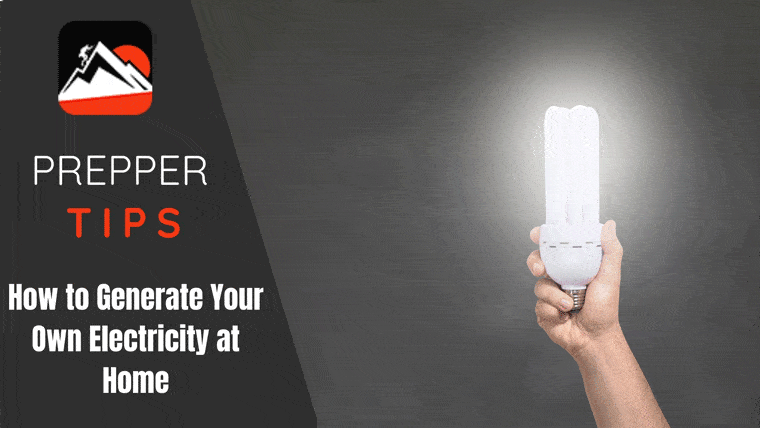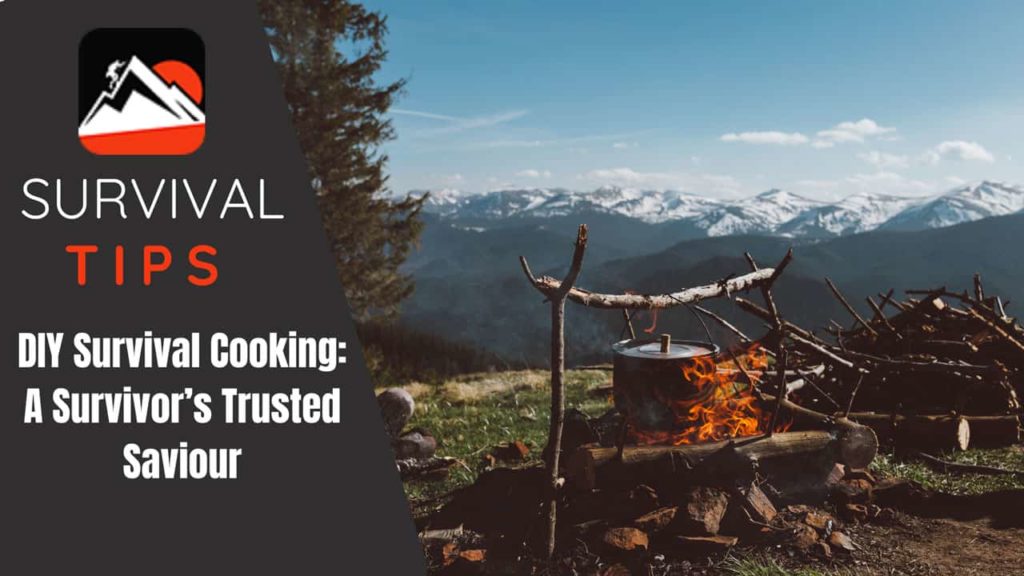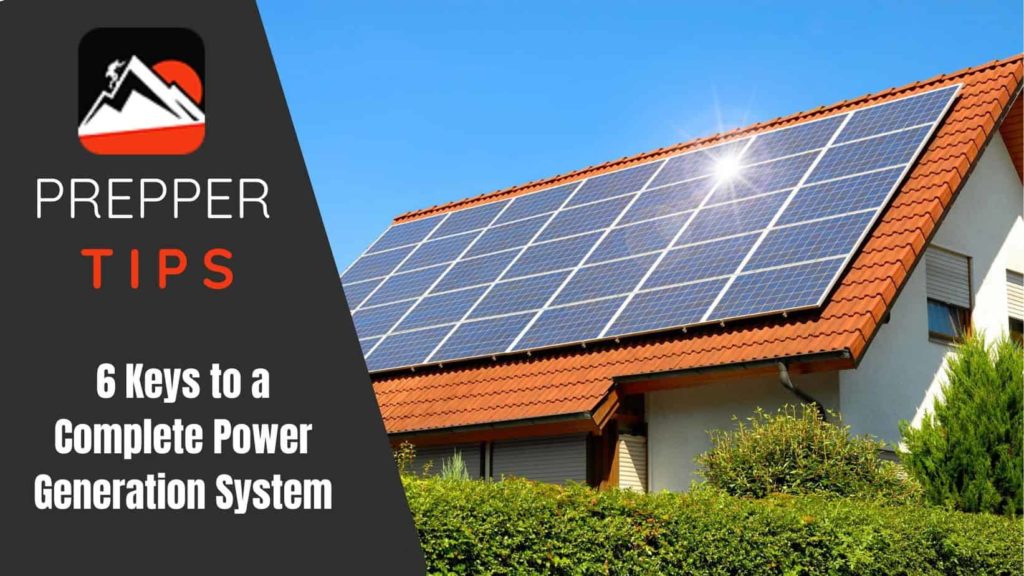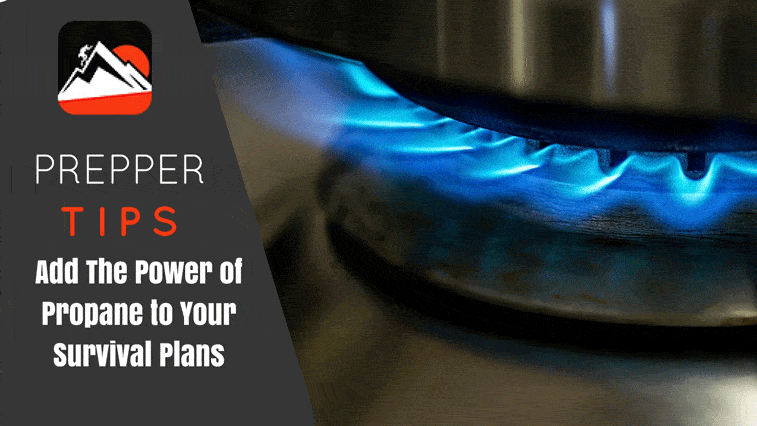Contents
Generating your own electricity comes with many benefits. It saves you quite a lot of money on energy bills and helps the environment, all while providing your home with the power you need. On top of this, you never know when the power might shut down.
This could happen due to a disaster or any other type of emergency. In these types of cases, generating your own electricity without the power grid can be of immense help – and it is easier than you think!
The best part is that there are several ways that you can generate your own electricity off-grid and store it to make sure that you are prepared for any emergency situation.
Ways to Generate Your Own Electricity
Here is a look at 4 ways that you can generate your own electricity at home.
Solar Power
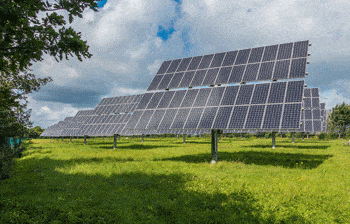
People have been harnessing the power of the sun to generate electricity for many years. The sun gives off a massive amount of energy, which is great news for those living in a sunny area. You can harness solar power and store it for a day you need it most.
You can use a panel containing solar cells placed in sunlight to convert the sun’s photon energy into DC voltages that you can either use directly or store away for a rainy day. People often use solar panels to charge batteries, and you can use those batteries to provide power to your home.
If you live in a sunny area, you should consider installing a few solar panels on your roof or anywhere there is direct sunlight. You can use the sun to harness and store energy, which you can then use later as needed.
If you plan to use many panels, hiring a solar power company to install a complete solar power system is a good investment. The money that you will save on electricity bills will pay for the cost of solar energy over time.
You might also find interesting our article about homestead improvements for a grid down disaster.
Wind Energy
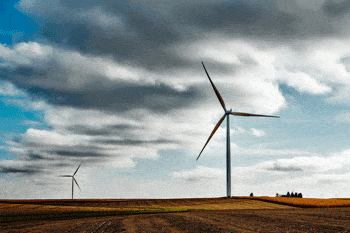
Do you live in an area that is windy most of the year? Then you can easily harness wind power to generate electricity at home. One of the things you can do is install a propeller-driven generator in your backyard.
What is great about these is that they are extremely easy to obtain and construct. Plus, unlike solar power, propeller-driven generators work both day and night. And, due to high winds, they can also still turn even when a storm clouds the sky.
Installing a wind turbine is another great idea for generating electricity at home. However, you should keep in mind that the size of your turbine will determine how much electricity you can generate.
A turbine of 400 watts will provide enough power for a few appliances while one of 900 watts will provide enough electricity to power a small house. Before installing a wind turbine on your property, make sure that you find out the local laws and zoning restrictions in your area.
Micro Hydro Energy
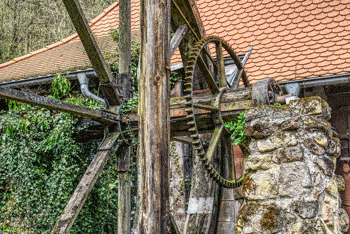
This is probably the least known method when it comes to generating electricity at home, but the concept is fairly simple. All you do is use running water to generate electricity.
The energy produced by water as it moves from a high level to a lower one will turn a turbine – similar to wind energy- thus, generating electricity that you can use or store for later use. Using the micro-hydro method can actually be the most cost-effective way to generate electricity.
On top of this, it will run 24/7 if you make sure that you have a good system and provide constant energy for a long time. The energy that this method produces is more consistent than other systems, which in turn means that you will need fewer batteries for storing energy.
However, the only downside to this method of generating electricity at home is that you need to have a stream on your property.
Biomass

Biomass systems, are another way to generate electricity at home. The largest biomass or bio-energy resource is still wood, but there are other sources that can be used, including plants, residues from forestry and agriculture and organic components.
Biomass systems also known as wood-fueled heating systems, burn wood chips, pellets or logs to provide ample heat to a single room or enough heat to power hot water boilers and central heating.
You can burn pellets or logs in a stove to heat a single room. If you want water heating as well, you can fit the stove with a back boiler, which is connected to hot water and central heating system.
Some of the benefits of biomass heating include savings on energy bills, affordable heating fuel compared to other heating options and provides you with a low-carbon, sustainable option.
When using biomass, keep in mind that burning plant or animal matter causes pollution of the air and water, while burning dung leads to the destruction of essential nitrogen and phosphorus.
Therefore, converting the biomass into biofuels or biogas is a much better option as it is not only eco-friendlier but also provides fuels that you can store for later use to power your home.
We also recommend reading our article about tips for a power generation system.
How to Choose Your Ideal Sources of Energy
There are many factors that you need to consider before choosing a source of energy that is right for you.
With so many options for generating power at home available nowadays, it is important to do thorough research before choosing your ideal sources of energy so that you make the best decision for your specific needs.
• Your Area: The first thing you need to consider is the area you live in. Is it a sunny area? Or is it an area that is windy for most of the year?

If you get a lot of sunshine where you live, your best option for generating electricity at home would obviously be solar power. As you have read earlier, wind turbines are a great option for those living in areas with a lot of wind.
If you have a stream running on your property, you can harness energy from the micro-hydro method. This is a superb alternative source of energy to have, even if you use solar panels or wind turbines.
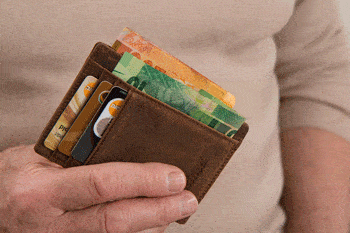
• Your Budget: Money is an important factor to consider before choosing your ideal source of energy. You need to think about how much money you can spend on generating power at home. Nowadays, you can get a few solar panels installed on your roof without spending a lot of money.
However, if you want a complete system, you will need to spend a little more than you expect. The good news is that your savings on energy bills will give you returns on your investment over time.
If you are looking for a cost-effective way to generate power at home, your best option is micro-hydro energy. Harnessing wind energy is also another affordable means of generating electricity.
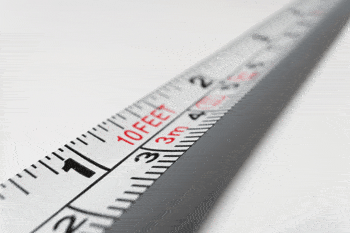
• Your Space: How much space do you have in your property for your system? For instance, do you have enough space in your backyard for a wind turbine? Depending on what or how much you need to power in your home, you will need to decide on the size of your turbine.
The number of solar panels you can install on your roof will also play a role in how much of your home you can power. Before you choose the source of energy for your home, you should make sure to inspect your property properly and determine how much space is available for your energy system.
The last thing you want is to make a hasty decision and then realize that you do not have enough space for the system you have opted for to generate electricity at home.
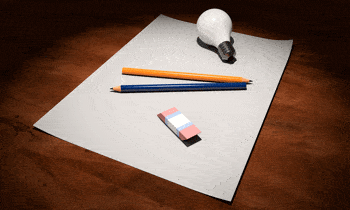
• Energy Efficiency: Another extremely important factor when choosing your ideal power source is efficiency. Which type of installation will be the most energy efficient? You need to think about how much energy you can harness from the method you have chosen to generate electricity at home.
When you decide on the most energy efficient option, you can be sure that you can heat up your home and power the appliances and systems that you need when the power in your area is shut down due to a natural disaster or emergency situation.
Learn About Your Ideal Combined System
Make a Budget and Start Small
Before installing the alternate source of energy you have chosen for your home, it is extremely important to make a budget. Think about how much you can afford to spend on the system, be it solar panels, a wind turbine or any other type of energy-generating system.
You should keep in mind that you do not have to spend a fortune to generate electricity at home. Consider the space you have at home and how much power you will need and then decide.
It is not necessary to go for the biggest system available. In fact, it is best to start small and see how much energy you are actually generating and what you can use it for.
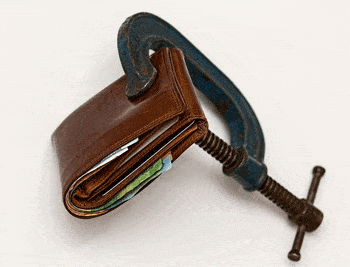
Once you have made a budget and decided on a system that allows you to stay within that budget, you can slowly make adjustments or additions to it over time.
You can determine how much energy you are using at home and then decide whether you need more.
People often make the mistake of opting for the biggest system without thinking about whether they will actually make use of the energy that they generate from it. It is much smarter to start small and make your way up if necessary.
Yes, you will get returns on your investment in the long run, but why spend a fortune when you really do not need to? The goal here is to find the ideal system to help you generate energy at home and make sure that you are well prepared for any situation where the power shuts down.
This means that you need to find a system that suits your budget and gives you enough energy to use or store for use at a time when you need it most.
Learn How to Maintain Your System
No matter which system you choose to generate electricity at home, it is important to remember that you are making an investment. And like any other investment – like your home or car – you need to take care of it.
Whether you choose a solar panel system or a wind turbine or a biomass system, it is crucial to learn how to maintain it.
Of course, you can contact a professional contractor for an annual maintenance check, but it is up to you to take care of your system for the rest of the year.
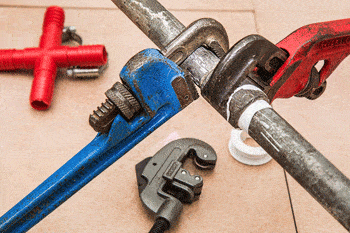
Even small things like cleaning your system and checking for minor issues regularly can go a long way in making sure that it lasts many years and provides the power you need in an emergency situation.
Every type of energy-generating system has its own unique maintenance methods and needless to say, you must learn them. If you have had a contractor to help you install it, you can inquire about how to maintain your system.
You may be given a manual as well so you can get the information you need on maintenance. Even if you have installed the system yourself, you can ask a professional about maintenance.
Simple tips like cleaning your system regularly, inspecting it for problems and checking all parts to make sure they are working are helpful to maintain your electricity-generating system.
Maintaining your system on a regular basis will help in ensuring that any minor issues are detected before they become major problems that cost you a fortune in repairs or replacement.
You can be sure that your system is in optimum working order and you can generate electricity off the grid so that you are self-sufficient. So, learn how to take care of your system and make sure that you have the power you need in any emergency situation.
Consider Having a Fossil Fuel Generator
One of the drawbacks of generating electricity with fossil fuels is carbon emissions. However, fossil fuel generators are still a very viable option if you are looking to generate electricity at home.
This type of generator has many advantages as well, so it is a good idea to consider having one in your home.
One of the major pros of using fossil fuels to generate electricity is that they have the capacity to generate huge amounts of energy.
You can use oil/petroleum, natural gas or coal in your generator – coal being the best option as it is a cheap source of energy and safe to transport.
Coal is also abundant, so you never have to worry about running out of fuel for your generator. Last but not least, it has a high calorific value, meaning that it contains a high amount of energy.
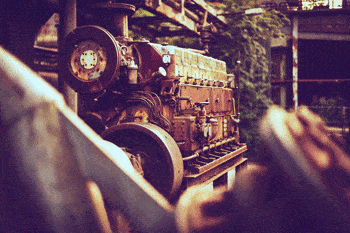
Using a fossil fuel generator can help you generate electricity at home with a turbine. This type of generator allows you to use the steam power system of generating electricity at home. This type of system uses fuel like wood or coal to heat a liquid, which then produces steam.
This steam passes through a turbine that is attached to a generator to produce electricity. The steam power converts the spinning turbine’s mechanical energy into electrical energy, which you can store to use when you need to.
When you use a fossil fuel generator, you can even install a large turbine without worry as the steam power will have the capacity to power it.
When you opt for a fossil fuel generator, you do not have to be too concerned about carbon emissions.
Yes, you will be emitting a certain amount, but on a large scale. The amount of fuel you use to generate electricity at home will not be enough to cause major damage to the environment.
Additionally, if you are generating electricity at home to store for later use, you can take a break at regular intervals to make sure that you are not causing too much pollution.
A fossil fuel generator is a good backup option provided you know how to use it carefully to generate the electricity you need at home.
Learn About the Proper Ways to Store Electricity
Learning how to generate electricity at home is important, but it is equally important to know how to store that electricity.
When you generate electricity at home, be it with solar panels, a wind turbine or any other method, you can use batteries to store it. Many companies produce high-quality batteries for storing electricity for later use.
Similar to common rechargeable batteries, there are very large batteries that you can use to store electricity until you need to use it. These systems can use lithium ion, lithium iron, lead-acid, or other battery technologies.
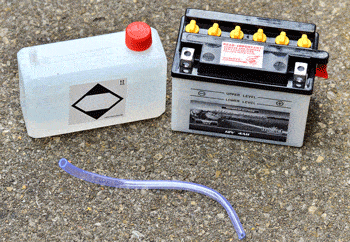
• Lead Acid Batteries: These types of batteries are a well-known, well-developed technology that has been used all over the world for decades. You can use lead acid batteries to store electricity for later use. However, you should keep in mind that they have a relatively short lifespan – meaning that the number of charge/discharge cycles is limited. Disposal of lead-acid batteries is another problem you have to consider as well.
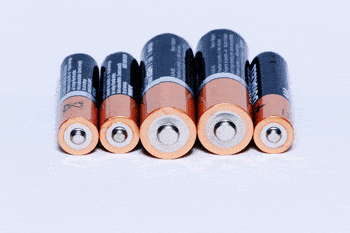
• Solid State Batteries: These batteries are those that use lithium ion or nickel cadmium. They are a salient option for storing electricity as they are 3 to 4 times more efficient than lead acid. They also have a great energy density, meaning that they can store a lot of energy in a small space.
Another way to store electricity is through thermal energy storage. You can use the electricity you generate to produce thermal energy.
You can then store this energy until you need it. For instance, you can use electricity to produce ice or chilled water during low-demand periods and use them later for cooling during periods of peak consumption of electricity. You can also store electricity as heat, to use during the cold winter months.
Consider Hiring an Expert to Help You
One of the best things you can do when you decide to generate electricity off the grid is to hire an expert. They can help you find the best alternate source of electricity for your home and give you advice on how to store it for later use.
Experts have the knowledge and experience to provide ideal solutions based on your home and particular needs.
They will assess your property and make sure that you get the best electricity-generating system to keep you prepared for any emergency situation.
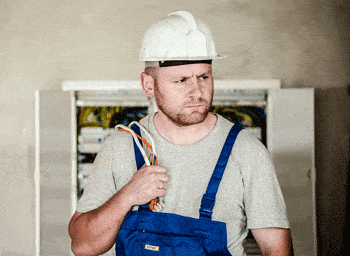
You may think that choosing and installing a system to generate electricity at home is a fairly simple task, but the truth is that there is a lot more to it than meets the eye.
As mentioned earlier, there are several things to keep in mind when choosing a system for generating electricity at home. You need to consider factors such as your budget, the space you have available on your property and the local laws and restrictions in your area.
A professional will take all of these into consideration before recommending a system and make sure that you adhere to the local laws and zoning restrictions where you live.
They will make sure that you stay within your budget and get a system that is energy efficient and delivers the electricity you need to use or store away for a rainy day. An expert will also provide you with the best storage system for the electricity that is generated.
Even if you think that you have a clear idea on how to install a system to generate electricity at home, you should consider hiring an expert to help you. With so many things to consider, it is a good idea to have a knowledgeable professional to assist you throughout the process.
They will help you make the best decision and also make sure that you are well prepared for any situation where the power is shut down and you need electricity in your home.
Some DIY Generators You Can Build
There are many DIY generators that you can build at home with easy-to-find equipment and simple tools.
Here is a look at a few that you can build yourself right to generate electricity off the grid and run small appliances and power your home during an emergency situation.
Mini Solar Generator:
This mini generator is as compact and portable as a personal ice chest – you actually build it with a small ice chest! But do not let its tiny size fool you because this DIY generator can supply you enough power to light up a room.
[embedyt] https://www.youtube.com/watch?v=oNuAWcAmVn4[/embedyt]
• Drill about 5 holes on the ice chest’s lid – 4 of them to mount the solar panel on the lid and 1 for the panel wire.
• Next, be sure to bolt the panel to the lid securely and run the wires through.
• Place a 12v socket on the side of the ice chest and apply glue to the nuts.
• Place the battery inside and plug it in.
• You can test it by plugging in a lamp with a compact fluorescent bulb and turning on your DIY mini solar generator.
DIY Wind Turbine:
You can build a 1,000-watt wind turbine to generate electricity to power your home. This is a great alternative source of electricity for emergencies, and you can build this generator in just 5 steps!
[embedyt] https://www.youtube.com/watch?v=t9TrUPoevXI[/embedyt]
• The first step is to build the magnetic disks. Hydro cut 12-inch steel disks and then cut out a template for mounting the magnets. Next, mount 12-grade n50 magnets around the outside edge. Then build a form and pour resin with hardener into it. Don’t ask Michael Kelso from That 70s Show to do this for you!
• Now, build the coil disks. Wind 9 individual coils, solder them in a 3-phase WYE configuration and encase them in resin. Use 35 turns of 2 parallel strands of 14-gauge magnet wire for 12 volts. For 24 volts, use 70 turns.
• The next step is to build the bearing assembly. Insert 2 Harley Davidson wheel bearings into a big metal pipe and lock a smaller pipe in between them to keep the bearings in place.
• Next, construct the blades. All you need to do is cut 2” x 6” pine at10 degrees on a table saw. Then sand the blades into a rough airfoil. Keep in mind that it will not be as perfect as you expect, but close enough.
• Lastly, assemble all the parts you have built to finally make your wind turbine. Make sure that everything is tightened properly and totally secure and stable. Once the wind starts blowing, your DIY wind turbine will start generating electricity for your home.
Homemade Hydroelectric Generator:
While building a hydroelectric generator at home can seem like a daunting and complicated task, it is easier than you realize. Plus, you do not need any special skills or experience.
[embedyt] https://www.youtube.com/watch?v=njNYuEKW-ek[/embedyt]
• The hydroelectric generator you will build will consist of 2 main parts: the stator and the rotor. The stator does not move and is equipped with coils of wire to collect electricity.
• The rotor is a moving part that is equipped with powerful magnets to induce electricity in the coils. First, cut 2 templates containing the stator and rotor and attach them to the front and back of the cardboard. After gluing these templates well to the cardboard, make a 1c, hole at the center of the stator disk.
• Next, make 4 coils to attach to the cardboard. First, take a cardboard with an oval section and wind the wires on it to form a tight coil – 200 turns should do. Then, remove the coil carefully from the oval section and repeat the step to make 3 more coils.
• Next, arrange the coils on the cardboard according to the scheme of the template, alternating their windings between clockwise and anti-clockwise. Make sure that an electron will be able to follow the path starting from the left counterclockwise coil. And you don’t have to watch the ridiculous Interstellar or Iron Man II movie to figure this out.
• Connect the coil ends and use insulation tape to prevent any mistakes. To check the electrical resistance, or ohms, use a multimeter. The meter should produce a reading of approximately 10 ohms if the wires are connected properly.
• Now, it is time to attach the rotor. Take 4 strong magnets to attach to the stator template. Check them and mark the south pole on 2 magnets and the north pole on the other 2.
• Arrange them on the template in a way that their polarity alternates, i.e. N-S-N-S. Next, take 8 plastic spoons and a cork and shorten the spoons so that their handle is not more than 1cm long. Take a look at the rotor template and insert the spoons into the cork at a depth of 1cm.
• Next, make a 6mm hole in the cork, ensuring that the hole is centered, and fix the geometrical position of the spoons again and add hot glue to each spoon so that it is securely in place.
• This is the step for the final assembly. First, attach the rotor, stator, and small turbine to a plastic bottle or tank. Find the center of the tank or bottle and make a 6mm hole and fix the stator with its coils just above it. Next, attach the rotor and turbine on the same shaft.
• Now all you need is a stream of water so that the turbine spins continuously. If you connect the turbine properly to the generator, you should have enough hydroelectric power to charge your batteries or juice your utilities. You don’t need Jack Bauer from the stellar show 24 to do this for you.
DIY Biogas Generator:
You can build your own biogas generator at home using a few materials that you probably already have at home. The best part is that with this DIY biogas generator, you do not need any animal waste!
[embedyt] https://www.youtube.com/watch?v=NnvwNN7DmHg[/embedyt]
• First, take some raw vegetable scraps, soil, and grass and mix them together.
• Take a funnel and pour the mixture into a plastic bottle.
• Next, stretch a balloon carefully over the bottle opening and put duct tape around the base of the balloon to seal it and keep any air from getting inside.
• As the days pass, the microbes present in the soil will work to digest the mixture. This, in turn, causes the release of methane gas, which will eventually fill up the balloon.
• Measure the amount of mixture in the bottle every alternate day. You should also measure the balloon’s circumference by wrapping a string around it, marking it, and then measure the string. You can do it!
Conclusion
As you can see, generating electricity at home is a simple job. And it is also incredibly easy to make your own generator.
Generating energy off the grid is extremely useful as you never know when a disaster or emergency might hit. It allows you to be ready for any situation where you do not have power, making sure that you have enough electricity to juice your appliances and electronics.
If you have not considered generating electricity off-grid, now is the time to do it. You can generate and store electricity and use it when you need it most – no matter when that is.

